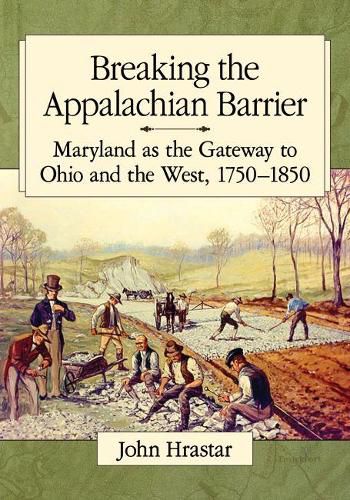Readings Newsletter
Become a Readings Member to make your shopping experience even easier.
Sign in or sign up for free!
You’re not far away from qualifying for FREE standard shipping within Australia
You’ve qualified for FREE standard shipping within Australia
The cart is loading…






This title is printed to order. This book may have been self-published. If so, we cannot guarantee the quality of the content. In the main most books will have gone through the editing process however some may not. We therefore suggest that you be aware of this before ordering this book. If in doubt check either the author or publisher’s details as we are unable to accept any returns unless they are faulty. Please contact us if you have any questions.
In 1750 the Appalachian Mountains, passable only by foot or horseback, were both a border and formidable barrier between the English on the east and the French in the west. In 1751 a private Virginia company saw an opportunity in Ohio and pioneered a road from Maryland to Ohio; they were ready to challenge the French and Native Americans for the Ohio country. Several wars over the next few decades stalled the road, which didn’t start in earnest until after Ohio became a state in 1803.
Breaking the mountain barrier now seemed critical to ensure the new nation would remain united, not divided, by the mountains. The stone-paved Cumberland Road from Cumberland, Maryland to Wheeling, Virginia was complete by 1818 and saw its heyday over the next thirty years, plied by Conestoga wagons and stagecoaches. Technology was changing rapidly; the Baltimore and Ohio Railroad, the first general purpose railroad in the world, started in Baltimore in the 1820s and reached Wheeling by 1852. The Appalachian barrier had been broken by both road and rail, ensuring the east and west of the new nation would remain united. Hundreds of people labored over a century to open the west to settlement.
$9.00 standard shipping within Australia
FREE standard shipping within Australia for orders over $100.00
Express & International shipping calculated at checkout
This title is printed to order. This book may have been self-published. If so, we cannot guarantee the quality of the content. In the main most books will have gone through the editing process however some may not. We therefore suggest that you be aware of this before ordering this book. If in doubt check either the author or publisher’s details as we are unable to accept any returns unless they are faulty. Please contact us if you have any questions.
In 1750 the Appalachian Mountains, passable only by foot or horseback, were both a border and formidable barrier between the English on the east and the French in the west. In 1751 a private Virginia company saw an opportunity in Ohio and pioneered a road from Maryland to Ohio; they were ready to challenge the French and Native Americans for the Ohio country. Several wars over the next few decades stalled the road, which didn’t start in earnest until after Ohio became a state in 1803.
Breaking the mountain barrier now seemed critical to ensure the new nation would remain united, not divided, by the mountains. The stone-paved Cumberland Road from Cumberland, Maryland to Wheeling, Virginia was complete by 1818 and saw its heyday over the next thirty years, plied by Conestoga wagons and stagecoaches. Technology was changing rapidly; the Baltimore and Ohio Railroad, the first general purpose railroad in the world, started in Baltimore in the 1820s and reached Wheeling by 1852. The Appalachian barrier had been broken by both road and rail, ensuring the east and west of the new nation would remain united. Hundreds of people labored over a century to open the west to settlement.